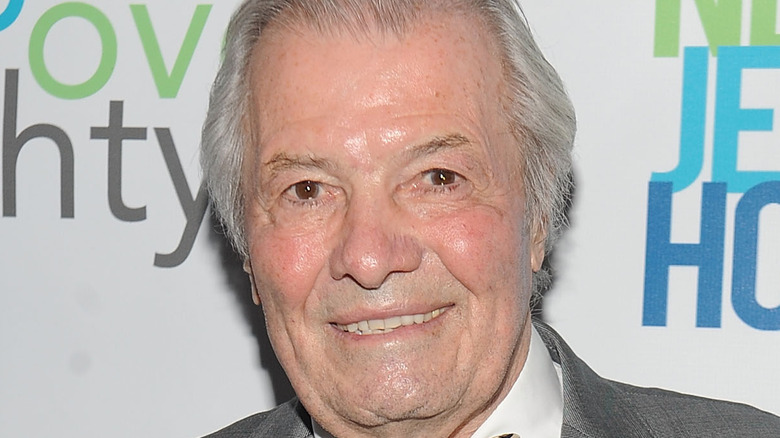The Roasting Method Jacques Pépin Wishes Was More Popular
There is something romantic and primal about roasting food over a fire. It is a time-honored tradition, one that, until very recently in history, has been considered the standard in cooking. Thanks to the advent of modern gas and electric stoves and ovens, wood-fire roasting is not practiced nearly as often as it once was. It's a method the legendary chef Jacques Pépin wishes were more popular.
Speaking to Food & Wine, Pépin stated that most food could be drastically improved by being in contact with a wood fire. "You do a fire in the woods and you eat hot dogs, which are basically burned to cinders, and it's never tasted better in your life," Pépin explained. "There is a communion with nature when you see the flame, when you cook with it, the smell and all of that."
While there has been a trend in recent years by chefs looking to re-incorporate wood fire into their cooking, the majority of home cooks are not likely to build a bonfire in the backyard just to roast a chicken. However, as Pépin noted, there is something wonderful about the nuance and char of properly roasted meat or vegetables. That sought-after char, thanks to the heat produced by the wood, is a great store of flavor that can really only be achieved with fire.
How to achieve the wood fire method and why it works
While there is nothing more convenient than tossing food into a preheated oven that maintains a consistent temperature, they don't reach nearly high enough temperatures to capture the essence of a roast the way wood fire does. The dry, radiant heat of a wood fire can reach temperatures of 2,000 degrees Fahrenheit, while ovens typically go no higher than 550 degrees and produce moist heat. A true roast, one that is charred on the outside, but tender and juicy on the inside, benefits from the intense heat of a wood fire.
While this heat is far too high to cook food over directly, setting the roast in front of the fire on a revolving spit gently rotates the food so it is not in contact with the heat for too long on one side. This helps create a more even cook, that is better able to hold in all those flavorful and essential juices. You can move the meat closer to or farther away from the fire, or dampen the flame to adjust the heat.
Another benefit of the dry high heat is the char you get on the outside of the roast. This is the work of the Maillard reaction which rearranges the amino acids and sugars in the meat, creating a crispy surface absolutely bursting with flavor. The roast, as Pépin said, has "never tasted better in your life."

